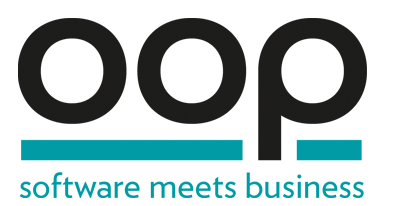Please note:
On this page you will only see the English-language presentations of the conference. You can find all conference sessions, including the German speaking ones, here.
The times given in the conference program of OOP 2024 correspond to Central European Time (CET).
By clicking on "VORTRAG MERKEN" within the lecture descriptions you can arrange your own schedule. You can view your schedule at any time using the icon in the upper right corner.
Thema: Cloud
- Dienstag
30.01. - Mittwoch
31.01. - Donnerstag
01.02.
In this session we will walk through various techniques to significantly reduce the resource consumption of regular Spring Boot applications, including using Spring AOT for regular Spring apps, compiling Spring Boot apps to native images (using GraalVM), and using CRaC for instant startup (for scale-to-zero scenarios). We will compare the different approaches, discuss pros and cons for each technology, and share concrete numbers from real-world applications to give the audience an idea of what…
User-centred design is one of the default modes of teams working with software, but the consequences are often unsustainable in a densely networked world as we privilege users over all other stakeholders and systems. How might teams approach building products, services and organisations from a more sustainable standpoint than 'user-centricity'? This talk looks at how the techniques of game design, community development, platform operations and security practices can support a practice focused on…
As more organizations are moving to the cloud, cloud architectures are getting more sophisticated by having a kind of technology diversity. This includes for example container orchestrators, database services, networking components & virtual machines.
When it comes to security, observability on this diversity is paramount. The main question here is, do you really perceive when your app landscape is under attack?
In this session, you'll have the opportunity to see various attack vectors & ways to…
Organizations are drawn to migrate their systems into the cloud, but in practice, cloud transformations do not always succeed in achieving the advantages often promised by cloud providers, such as scalability, availability, and cost effectiveness.
We give an overview over Kevin Hoffmann's fifteen factors for cloud-native applications and how they help us achieve success in our cloud migrations.
Target Audience: Architects, Developers, Operations, DevOps
Prerequisites: Basic understanding of web…
At Tchibo we wanted to reduce our server and energy consumption with our product development teams. But why would we care? We all like fast snappy development and test systems. And our shop needs to survive Black Friday’s shopping traffic. Annual Google Cloud consumption forecasts do not trigger us to consume less. But when we started to show teams their related carbon dioxide footprint, we created a feedback loop that will help us to become better CO2-developers.
As developers, we have an…
High traffic during business hours, no traffic at night, weekends and vacations, multiple teams, and several staging environments - these characteristics of a typical enterprise application. Pay-as-you-go, "scale-to-zero" and managed services make serverless architectures appealing for enterprise applications.
On-premise, on the other hand, you get the maximum flexibility and full access to machines with less automation and so more plumbing.
I will compare both approaches with focus on…
Great engineers often use back-of-the-envelope calculations to estimate resources and costs. This practice is equally beneficial in Machine Learning Engineering, aiding in confirming the feasibility and value of an ML project. In my talk, I'll introduce a collaborative design toolkit for ML projects. It includes Machine Learning Canvas and MLOps Stack Canvas to identify ML use cases and perform initial prototyping, thus ensuring a business problem can be effectively solved within reasonable cost…
DevOps isn't dead yet and it will not die in the future. Platform engineering comes to leverage DevOps practices horizontally to support developers, operations and those in between. In this session, I will give you a perspective on how to move on from DevOps to Platform Engineering, how to design and shape your internal platform and build a vibrant community sharing best practices and enabling each other to overcome faster issues. In the end you will understand how we can reduce the cognitive…

